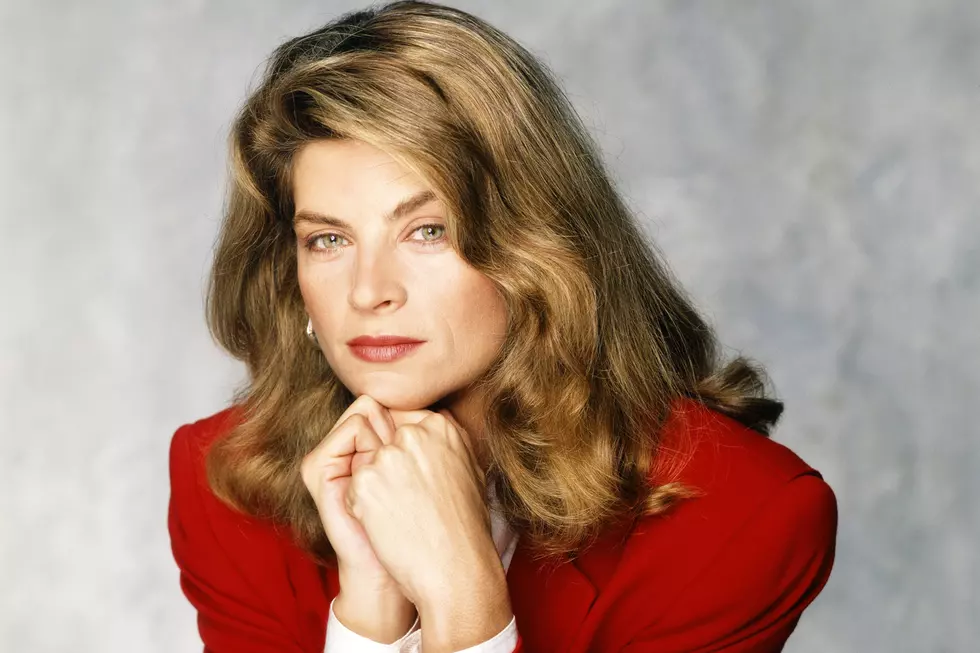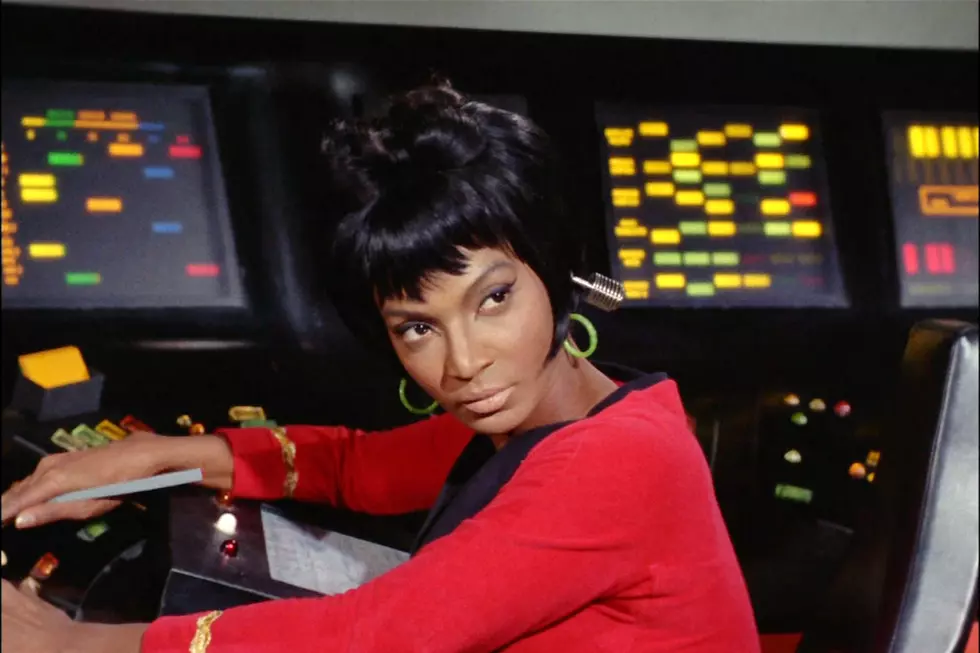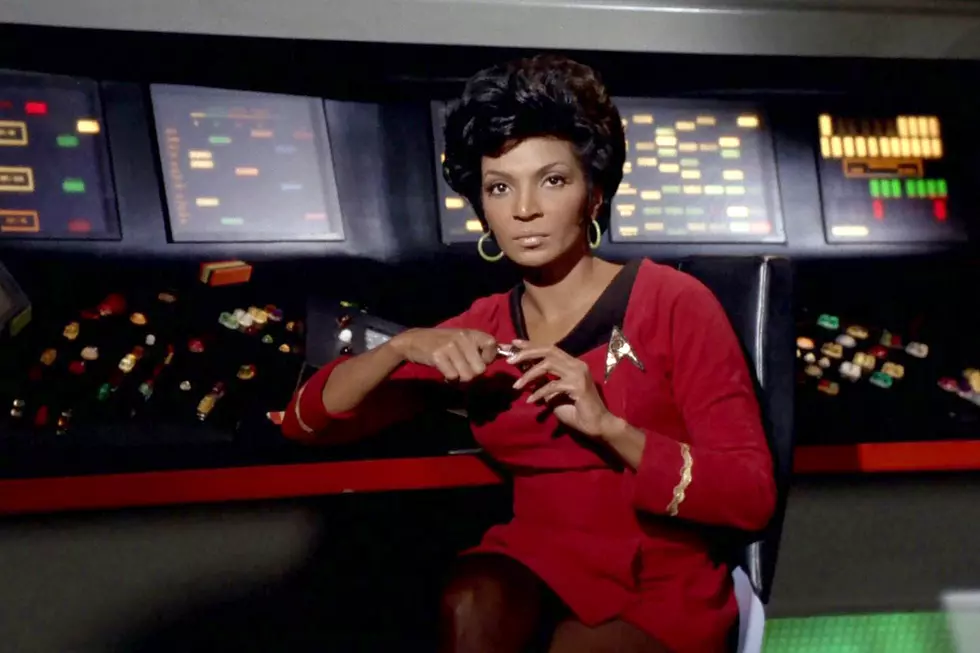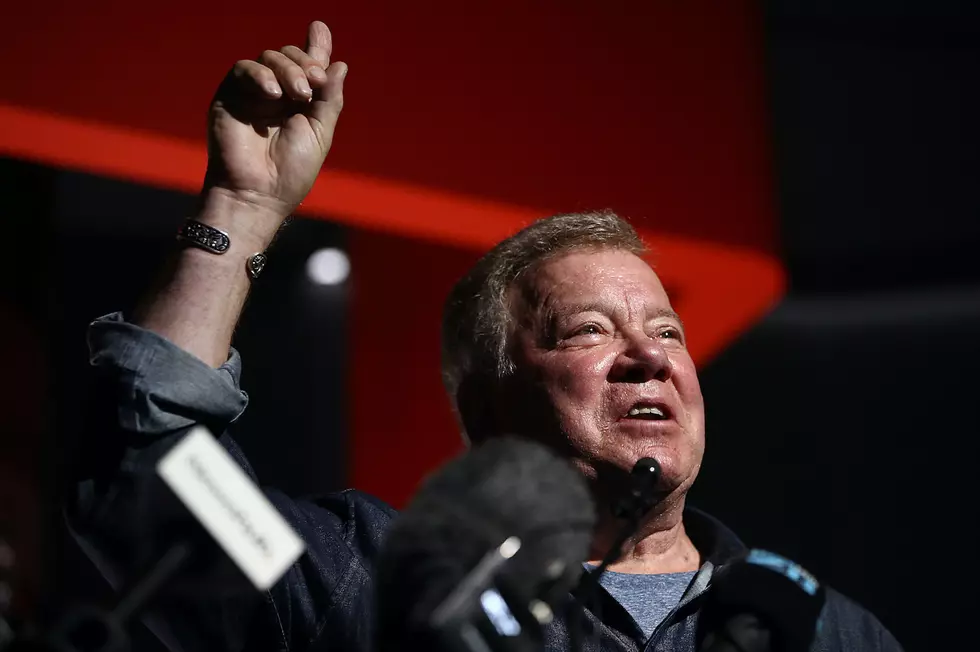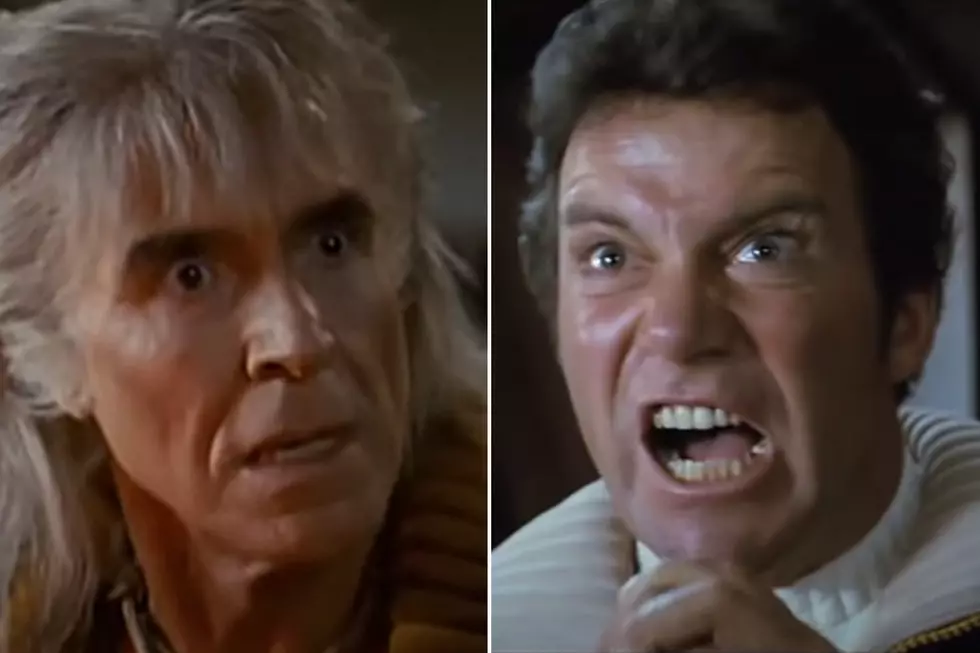
40 Years Ago: ‘Star Trek II’ Brings Back ‘Khaaaaaaaaannn!’
Star Trek’s anticipated return in 1979 wasn't what many people wanted it to be. Star Trek: The Motion Picture turned out to be a series of compromises tied in with a confused artistic vision, lacking sufficient action and character development to the point where it was called “The Motionless Picture” by some fans. So it was something of a surprise when a sequel was commissioned, although several backstage changes were enforced on the production.
Franchise creator Gene Roddenberry was pushed out after Paramount bosses lost faith in him, feeling he was responsible for the failures of the first film’s severe delays and significant overspend. He was replaced by Harve Bennett, a TV producer who had no previous experience of Roddenberry’s greatest creation and who started by borrowing tapes of all Star Trek episodes and binging them.
Feeling that TMP was hampered by a lack of any real villain — the digital lifeform V’ger wasn't an entity that humans could face off with — Bennett singled out the genetically modified man Khan Noonien Singh from the acclaimed 1967 episode “Space Seed.”
In that story, Khan was awoken from a sleeper ship, along with his 80-member crew that had escaped criminal proceedings on Earth in 1996 after having tried to take over the world. He was soon back to his old tricks, attempting — and nearly succeeding in — hijacking the USS Enterprise. Instead of making him face court, Captain Kirk offered him the chance to start a new adventure by way of building a new life on the uninhabited planet Ceti Alpha V. It was an offer Khan welcomed. The episode closed with Spock observing, “It would be interesting, Captain, to return to that world in 100 years and learn what crop had sprung from the seed you planted today.” Kirk replied, “Yes, Mr. Spock, it would indeed.”
Bennett decided to bring Khan back just 15 years later, but added a twist: In the interim, neighboring planet Ceti Alpha VI exploded, changing the orbit of Khan’s new home and rendering it a desert world. His crew dwindled to just 20 in the resulting struggle for survival, and when Khan’s wife died, his barely controlled megalomaniac tendencies got the better of him for good.
After many rewrites, Bennett hired fresh-faced director Nicholas Meyer to bring the movie in for a budget of less than $10 million — a reaction to TMP costing more than $44 million and earning around $139 million, far less than had been hoped for. They pushed the budget to $11.2 million, but it was still a fraction of the first movie’s reserves. Many believed it indicated that this would be the last Star Trek production.
Watch the ‘Star Trek II’ Trailer
William Shatner, Leonard Nimoy and DeForest Kelley returned as Kirk, Spock and McCoy, respectively — but not without some persuasive efforts from Bennett. Kelley initially flat-out refused, admitting: “I thought after the other one that perhaps it would be a long time if indeed we did one at all. This one came as quite a surprise.” Nimoy was talked into it only after Bennett promised him an unforgettable death scene for Spock a third of the way through the story. After relenting, Nimoy noted there was always a question that arose when Trek returned to his life: “Do we have it this time? Is it gonna be there again?” But he was encouraged by the script, which he said had “charm and some humor,” and featured “characters … in focus in their relationships with each other.”
The script's strength came from Bennett and Meyer’s vision, crystallized by another Trek newbie, screenwriter Jack B. Sowards after many rewrites, including a script submitted by Roddenberry and one assembled by Meyer in a bid to assemble the best of all the others. Shatner had to be talked into playing Kirk as a man beginning to feel his age and having to deal with the loss of close friends, believing he could still play the by-now admiral as a younger person. But Bennett insisted that Kirk’s aging was the story's theme.
Ricardo Montalban also returned as Khan, generously compromising on his fee to make the production affordable. By that point, he was the nice-guy star of the successful TV show Fantasy Island and had forgotten how to play a bad guy. He resorted to watching “Space Seed” over and over until he got back into the character. “A villain doesn’t think that he’s a villain,” Montalban said later. “He does villainous things, but he doesn’t act villainously — otherwise he would not be a human being. When I play good guys, I also try to find some fault in them because nobody’s totally good or totally bad. This man had a distorted resentment … but he doesn’t think of himself as a villain. He thinks that he’s doing the right thing: vengeance for the injustice to his wife.”
Watch the ‘Khaaaaannnn!’ Scene From ‘Star Trek II’
His TV schedule presented another problem, which was resolved with a very clever approach that added tension to the standoff between Kirk and Khan. "The irony there is that I never worked on the same set with [Montalban], Shatner recalled. "We were brought together in the editing. But we would meet every so often to avoid not seeing each other." It meant that the enemies only spoke via video or radio link, which proved to be a storytelling asset.
Meyer had become a fan of Roddenberry’s original vision of Trek as “Horatio Hornblower in space” and decided to reinforce the maritime elements of the Starfleet world (finally confirmed to be taking place in the 23rd century in the movie). Along with making the uniforms more military-looking, he added a ship’s wheel and bosun’s whistle to everyday life, and he created a scene in which ship hands race about to manually load torpedoes for launch, just like 17th-century sailors loading cannons on ships. Roddenberry hated the changes but was powerless to prevent them.
The battle of wills between Kirk and Khan was lifted directly from Herman Melville’s 1851 novel Moby-Dick, the story of Captain Ahab, who sets sail on a whaling ship to kill a whale that took half of his leg and whose “quenchless feud” infects his crew and ultimately dooms all but one of them. Khan became Ahab, and Kirk became Moby-Dick, and several lines of dialogue came directly from the book, including Khan’s last words: "To the last, I grapple with thee; from Hell's heart I stab at thee; for hate's sake, I spit my last breath at thee."
Meyer wanted to call the movie Star Trek II: The Undiscovered Country, referring to growing old. The studio wanted The Vengeance of Khan, but at that point, the third Star Wars movie was titled Revenge of the Jedi, and they didn’t care to go head-to-head with George Lucas’ juggernaut. Instead, The Wrath of Khan was chosen — something Meyer was strongly against, and, it was rumored, he threatened to remove his name if the title was used.
With many — but not all — the battles fought, principal shooting began on Nov. 9, 1981, and ended on Jan. 29, 1982. Meyer later recalled the difference between directing his lead actors: “He was always sort of striking attitudes - he’d gotten all these habits of, ‘I’m Captain Kirk,’” the director said of Shatner. “I realized that if I tackled it head-on, he would become very, very defensive. … But I did understand that he got better when he stopped doing that. How you stopped him from doing that was getting him to be bored with what he was doing. And when he was bored, he let down his guard, and other things came to the fore.”
He cited the example of the line: “Here it comes,” which takes place after a shootout between the Enterprise and the Reliant, the ship Khan had commandeered. With his vessel all but crippled, Kirk is forced to send Khan the data file on the Genesis device, the prototype terraforming system Khan covets. Kirk asks for time to prepare the information while his crew is preparing a takeover command so it can shut down the Reliant’s defenses. An impatient Khan says he’s run out of time, to which Kirk responds, “Here it comes,” knowing the double-cross that’s about to take place. But Shatner’s delivery of the line was too melodramatic. "'This guy is a really smart guy — he’s gonna know,'" Meyer recalled saying. "'Your sarcasm is dripping off the lens here!’" Another take came off “very heavy-handed” again, and Meyer lied to Shatner, telling him the sound team had missed the shot. “We just kept doing it until finally what you see is in the movie. And that’s how the performance was got," the director said. "After a while, he knew what I was doing … and he got more into what the movie was about, which was a man getting old and losing his friends."
Montalban was a different case. Due to his limited availability, he couldn't rehearse with Meyer when he arrived to shoot his first scene — the moment when Captain Terrell and First Officer Chekov of the Reliant, who think they’re on Ceti Alpha VI, discover the remnants of Khan’s attempt at building a new world and are told what went wrong. "I think, the poor actors, it's always, 'Cut! Cut!,’" Meyer said. “It’s always coitus interruptus – what about just letting them go? I thought, 'Try to do it one camera move, so he can just do it, and we'll dance around him for 23 marks.’” Montalban’s first take was “letter-perfect” and “hit every mark,” but he screamed the entire dialogue, and Meyer worried about how to ask for something different. "This is the second movie I’ve ever directed. This man, if we just typed up his credits it would be taller than I am. What is he going to do if I start telling him things?"
He took the conversation to Montalban’s trailer, where he recited an old Laurence Olivier quote: "An actor should never show an audience his top because once they know your top, you have no place else to go.” He continued: “And [Montalban] looks at me and goes, ‘Oh … you’re doing to direct me?’" There was a pause before the actor added: “That’s really good; I need direction. I don’t know what I’m doing up there!” It turned out that previous directors had simply told him, “Ricardo, make it a good scene.” “So we evolved a collaboration,” Meyer noted.
Watch the 'Here It Comes' Scene From 'Star Trek II'
As the principal shooting continued in as much secrecy as possible, the death of Spock was unexpectedly leaked to the press, resulting in a massive fan backlash. Some within the production believed the shunned Roddenberry was responsible for the leak, but no evidence was ever discovered. At the same time, Nimoy had found himself enjoying his return to Trek and wanted to take part in the increasingly likely third movie. Bennett and Meyer resolved the issue by opening Wrath with the scene in the Kobayashi Maru bridge simulation, where Spock is seen to die as part of a training exercise, only to stand up once it's revealed to be a simulation. They hoped that would both mollify fans and mislead them into being taken by surprise when Spock later sacrifices himself to save the Enterprise from an engine overload that makes it impossible to escape from Khan’s suicidal final act.
A clever loophole allowed everything to proceed more or less as planned: Just before Spock enters the radiation-flooded control chamber, he mind melds with McCoy and says, “Remember.” That was enough to suggest a way back for the character and also enough to inspire plots for Star Trek III: The Search for Spock and Star Trek IV: The Voyage Home. Until he saw the completed Wrath, Nimoy wasn't aware that the film ended with a view of his coffin lying on the planet recently terraformed by the Genesis device after Khan detonated it. “I knew I’d be getting a call from Paramount,” Nimoy said later.
Watch the Death of Spock From ‘Star Trek II’
The discussion around Spock’s death remained unavoidable, especially after the studio made a point of trying to get out the "He will return" message. During a promotional appearance on The Tonight Show with Joan Rivers as the guest host, Shatner was asked if it was true if “we lose Spock.” “We do?” he responded with dramatic surprise. “Well, maybe we do. I don’t know. You’re gonna have to pay your money and take a look. He dies, perhaps, but then on the other hand he may continue to live.” Asked if the hint revealed the possibility of a third Trek movie, he replied: “I certainly hope so!” In a separate interview, Meyer was asked if the franchise could continue without Spock. “No, and I don’t believe it will,” he said somewhat open-endedly. “If there’s more Star Trek, there’ll be Spock.”
Star Trek II: The Wrath of Khan arrived on June 4, 1982, and it was such a success that it guaranteed the future of the franchise, grossing $97 million. Even thought it earned $10 million less than The Motion Picture, it had done so at considerably less risk. The movie is also notable for a number of production firsts. The video simulation of the Genesis device recoding a planet was the first time a fully computer-generated sequence had appeared in a movie. It was the first time starship computer displays were created using calibrated monitors rather than loud, heavy projectors. The actual explosion of the Genesis device was filmed at 2,500 frames per second, the fastest-ever camera speed on any movie.
The film helped establish the career of composer James Horner, who was hired to save cash and given very specific instructions on what he should write for the soundtrack. “I wasn't in a position to say 'Go to hell!'" he admitted later. Among its many little flaws are the fact that Chekov recognized Khan when they met on Ceti Alpha V, even though the Enterprise crewman hadn’t been introduced when “Space Seed” was shot. Fans developed their own answers (one being that they did meet, and even fight, below decks), but Meyer resorted to a trick pulled by one of his heroes, Sherlock Holmes creator Arthur Conan Doyle: He often created accidental plot holes, accepted them and simply refused to apologize.
Most die-hard Trekkers were glad they’d given Star Trek II a chance. But some may have regretted their change of heart after Nimoy, who directed Star Trek III as part of his agreement to return, was responsible for the demise of their favorite nonspeaking character, the USS Enterprise.
For Meyer, Wrath represented the opening salvo in a career-spanning argument: “You say you don’t like science fiction, but what is science fiction? At what point does the human component of it become more important? Every science fiction movie I made was always set on planet Earth, right here, right now — no matter what they were wearing.”
28 Classic Films That Were Turned Into (Mostly Failed) TV Shows
More From Idaho’s Talk Station
